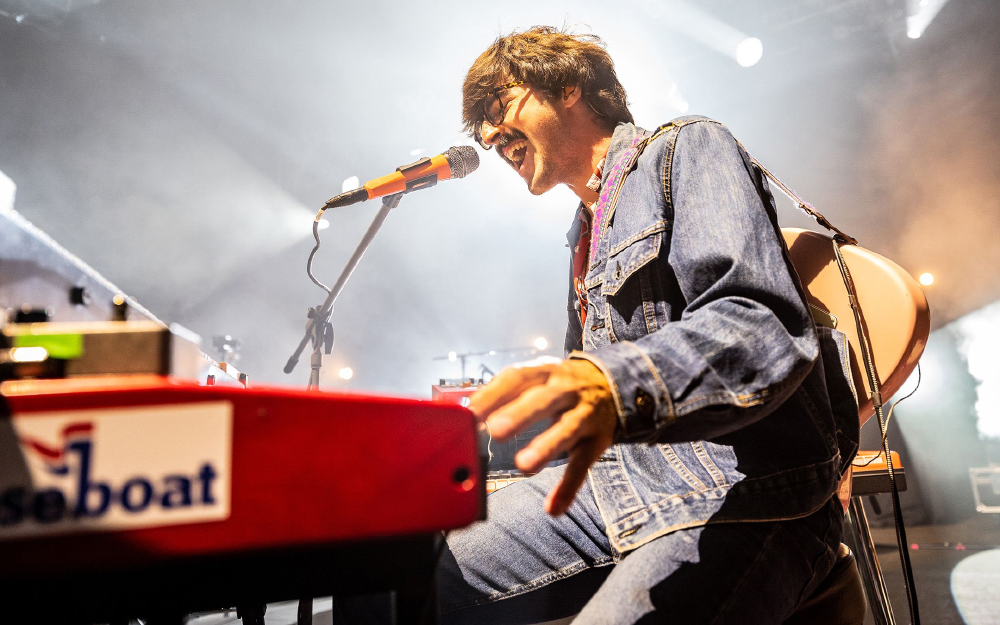Popular jamband Goose didn’t let the pandemic stop their live performances for legions of fans — while concert touring was forbidden, the band livestreamed eight completely different sets of music from a converted barn in Connecticut, utilizing TELEFUNKEN dynamic microphones.
The mics were built at the company’s Custom Shop, including one in Cherrywood with Copper grille for vocalist/guitarist/keyboardist Peter Anspach, Orange and a Blue M80 for lead singer/guitarist Rick Mitarotonda, an M80 for percussionist Jeff Arevalo on backing vocals, and an M81-SH for the band’s Hammond organ Leslie amp and rotating loudspeaker.

“Telefunken’s M80 has changed our perspective on vocal mics in a live setting,” says Anspach. “The M80 provides an extra bit of clarity and pop in those high volume intense situations. They give me the confidence to step up to the mic no matter what is going on musically and know that I will be able to cut through and deliver what I’m singing. I haven’t found this to be the case with any other vocal mics on stage.”
The bands front of house engineer, Sam Bardani, adds, “The M80’s on vocals are particularly excellent in the areas of durability and minimal bleed due to their tight pattern, which is crucial on a busy stage. These mics have amazing top-end clarity and really work on lead and backing vocals; the low-mids are great at capturing the warmth in Rick’s voice. When Peter added his Leslie speaker, he asked my opinion on what mics to use; Telefunken was my first choice. Transparency in tone, durability, and keeping a low footprint are my top priorities, and the M81-SH excels in each area. The M82’s ability to handle low end without ‘mud’ made it the perfect choice for the low mic on the Leslie.”
Goose released its first album “Moon Cabin” in 2016, which was recorded in New Hampshire in a remote cabin by a frozen lake. Their music was described as “funk-folk” as they toured primarily in New England through 2019. During the pandemic, they began work on their just released new album “Shenanigans Nite Club.”
Kenny Cash, co-producer of the new album and owner of Factory Underground Studios, notes, “The main Telefunken mic that Goose used for the album was the Telefunken U47 on vocals. I also set up some ELA M260s for the overheads. This record was done in various home situations throughout the past five years. For the most part I would pop by, loan some gear, do basic setup and troubleshooting, then let the guys get to work. Cymbals can always be my enemy in mix down so having a signal source that is smooth yet present always makes my ears happy.
“I always champion a strong and comfortable performance over sonic perfection, but I remember giving a sigh of relief when I heard Rick got his hands on a Telefunken U47 to track his vocals with,” he concludes. “It just means that there would be less work I have to do to make the vocals sound like a ‘record’ and more time getting to add some creative sauces. Without hating on other mic companies, I can just tell you that every voice or instrument pairs uniquely for better or worse with different microphones. I have had great experience with the U47.”




















